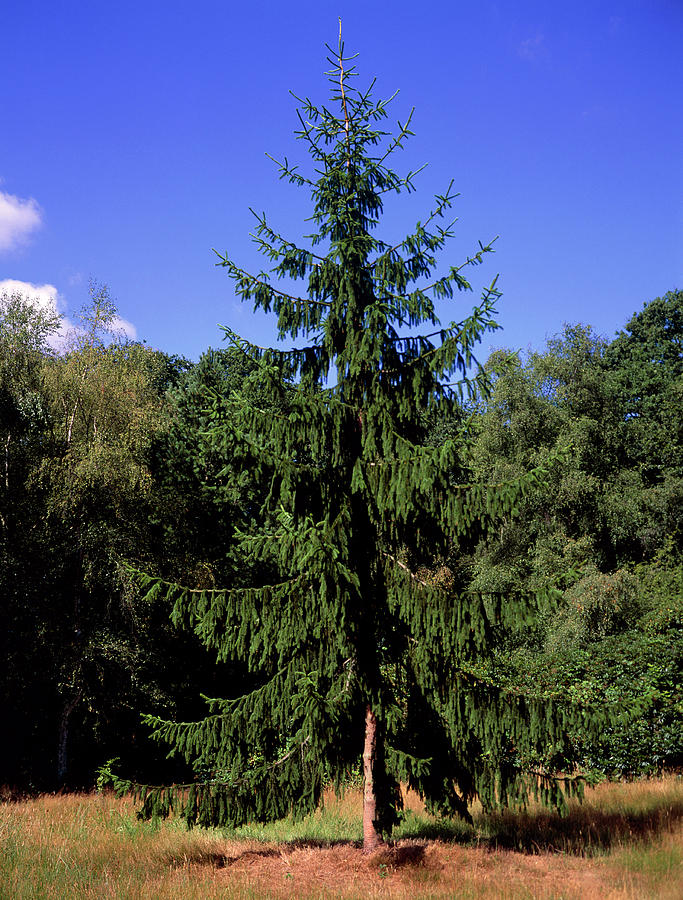

Dwarf Alberta Spruce (Picea glauca ‘Conica’): A tree growing to 13 feet hardly qualifies it to be a dwarf, but these are spruces we are talking about.It also has a slower growth rate and takes many years to reach maturity. While it requires full sun just like most spruces, this variety cannot survive in windy places. Oriental Spruce (Picea orientalis): An average tree by spruce standards that reaches a maximum of 35 feet high at maturity.However, it does well in soil that stays moist most of the time and thrives in zones 3 to 6. Unlike other varieties, this spruce can tolerate partial shade even when young. Red Spruce (Picea rubens): One of the tallest spruces, this giant reaches 130 feet easily in the right conditions.Some people grow it in a container where regular pruning keeps its size compact. This cultivar averages between 2 to 4 feet tall although trees older than 30 years might continue to grow to reach 8 feet but that’s rare. Bird’s Nest Spruce (Picea abies ‘Nidiformis’): The dense foliage of this variety takes the shape of a bird’s nest.You can grow the black spruce easily if you live in zones 3 to 7. This variety is famous for its mistletoe and its ability to grow in different soil conditions including wet areas. Black Spruce (Picea mariana): While also a large tree that extends to 50 feet or higher when fully mature, some cultivars including Nana will only grow to two feet tall.Here are some of the most popular spruces to grow. You can still have a spruce tree or shrub adorning your backyard or even side yard no matter how limited that space is. Luckily, spruces come in many shapes, sizes, and qualities. It’s true that you may not have the right space in your garden to host a 60-feet Norway spruce tree. While the needles of the fir are soft and blunt, those of the spruce are hard and sharp. They both look the same but the needles tell them apart. However, some people mistake the Norway spruce with the Douglas fir.



With 25 feet spread, this spruce stands out in any landscape. Of all its ornamental features, it’s the pyramidal shape of the tree that makes it easy to spot. The only downside is that these trees don’t do well in hot weather. Hardy and tolerant to cold weather and even frost, this spruce will handle freezing temperatures reaching -40 degrees Fahrenheit. Each needle averages between a half to one inch in length while the scaled brown cones reach about 6 inches in length and turn downwards when fertilized. That’s mostly thanks to its distinctive needles and unmistakable cones. While not exactly a giant of a tree, the Norway spruce still needs a lot of space to grow high and wide in your garden.Īmong other spruce tree species, this one has the fastest growth rate and, according to horticulturalists, the most ornamental values as well. They thrive under the full sun where the mature tree averages between 40 to 60 feet. The trees adapted well to the cold and temperate zones of North America and now they grow successfully in zones 2 to 7. And it was from there, that the first settlers brought it with them as they migrated to the New World and planted it around their farms and homesteads as excellent windbreaks. Originally from Eurasia, Norway spruce tree (Picea abies) was growing in the Black Forest and other parts of the continent before it traveled north to settle in Norway. This European tree has invaded our hearts and become an integral part of the American psyche.īut with all its great landscaping qualities, why wait until Christmas to bring it home? Why not grow it in your garden and have a festive atmosphere all year round? The answers to these questions explain the growing popularity of Norway spruce trees in many backyards, lawns, and patios both in urban and suburban landscapes. Every December around Christmas, many households make room for the Norway spruce tree in the best place in the house. Whether you’re aware of it or not, this distinctive tree has been part of many of your most celebrated and cherished memories. The Norway spruce tree has always had a place in our homes.


 0 kommentar(er)
0 kommentar(er)
